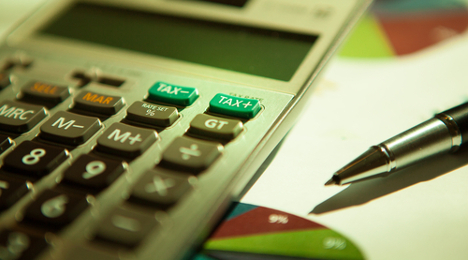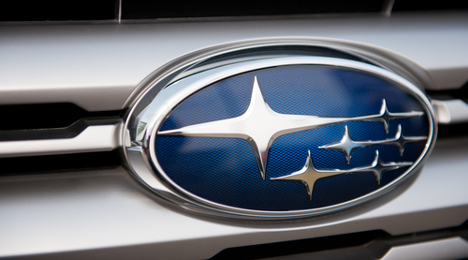Perhaps the 2016 J.D. Power Automotive Summit poured a bit of cold water on things just as the festivities in Las Vegas cranked up ahead of the NADA Convention & Expo.
J.D. Power cautioned the industry on Thursday that the U.S. auto market must adopt a more “disciplined” approach to maintain long-term health for the industry.
J.D. Power also warned dealers and other leaders that incentive spending on new vehicles has risen rapidly in the past year and is trending toward recession-era levels for the industry as a whole and has already exceeded recession-era levels on cars.
The analysis found that while overall new-vehicle retail sales are expected to grow by 300,000 to 14.5 million units this year, the growth is being delivered through actions that pose “meaningful” risks to the long-term health of the industry. J.D. Power indicated those actions include:
—Elevated incentive spending
—Increased use of extended loan terms
—Rising loan-to-value ratios
—Record levels of leasing
“Overall, auto sales figures continue to post strong results, but when you peel back just one layer beneath the surface, some worrisome trends are taking hold,” said Thomas King, vice president of the Power Information Network at J.D. Power.
“Chief among the trends is the fact that first quarter sales incentives averaged 9.6 percent of MSRP, a 70 basis-point increase from last year and are trending toward levels observed at the height of the recession,” King continued.
“The increased spending, which is due primarily to manufacturers trying to offset a shift in demand from cars to trucks and SUVs, has the potential to reduce future resale value,” he went on to say. “Significant declines in the value of used cars would disrupt consumers’ ability to buy new vehicles (due to lower trade-in values), while vehicle manufacturers and lenders would have to deal with exposure on their lease portfolios (if off-lease vehicles fail to achieve their expected resale value).”
King noted that an immediate and significant reduction of incentives on new cars is required, but that means manufacturers will have to reduce vehicle production levels. While J.D. Power noticed that many manufacturers have already made significant adjustments to their production schedules, analysts pointed out the scale of the shift away from cars toward trucks and SUVs is such that further, more significant changes are required.
The J.D. Power briefing mentioned four other key findings. Data is for the first quarter of this compared with the first quarter of last year, unless otherwise noted.
—Overall sales growth projected through 2017: In 2015, 14.2 million retail sales were achieved. That figure is projected to grow to 14.5 million in 2016 and 14.7 million in 2017.
—Rising incentives are major concern: Industry-wide, incentives are averaging 9.6 percent of MSRP and are just 150 basis points shy of the peak level reached at the height of the recession.
—The industry’s average incentives mask a significant deviation between spending on cars versus trucks: Spending on cars has reached 12.3 percent of MSRP, well above peak recession levels, while spending on trucks has remained stable at 8.2 percent.
—Long-term loans and leases on the rise: The percentage of loans in the 84 months and longer range is now 5.4 percent of total sales, up 140 basis points from 2015. Likewise, the percentage of vehicles that are leased is now 31.4 percent, up 360 basis points from 2015.
—Buyer credit scores declining: The proportion of new-vehicle buyers with FICO scores below 650 has increased 40 basis points from 2015 with a total of 17.6 percent of all buyers now falling into that category.
Sixteen percent of AutoNation’s used-vehicle inventory was unable to be sold at the end of last year due to its own internal policy to not sell any vehicles with open safety recalls. Add that to the less than 2 percent of their new-vehicle inventory affected by the same policy, this represents roughly 6 percent of all of AutoNation’s inventory that it had grounded at the close of 2015 for this reason.
Bill Berman, AutoNation’s executive vice president and chief operating officer, says this policy, which AutoNation put in place last year, has certainly impacted the company’s used-vehicle sales – but will prove to be worth it.
“We continue to implement systems and processes in support of our efforts to ensure no vehicle with an open recall is retailed,” Berman said. “We continue to believe the long-term safety benefits for our customers far outweigh the short-term impact to our results and further support the AutoNation brand promise.”
Pointing out that the recall policy has virtually no impact on new-vehicle sales, AutoNation chairman, chief executive officer and president, Mike Jackson, believes the short-term discomfort the recall policy is having will iron out within the first half of 2016 and will eventually be a selling point for its customers.
“It’s a significant impact on preowned. Just to discuss the issue for a moment, I think the auto industry really had some credibility issues it has to face up to,” Jackson said. “Everything from some of these horrific recalls we’ve had with significant loss of life to credibility issues around the Volkswagen situation. So we sit there and say, you know, what can we do on our part to make it better? So on preowned it’s a significant issue. On any given day 15 percent of our inventory has open recalls.
“These are significant safety recalls and we feel the time has passed that it’s appropriate to take a vehicle in trade with a significant safety recall and turn around the next day and sell it to a consumer,” he continued. “We’re the only one that’s done it, we think it’s a brand attribute, we will work to make it a brand attribute in 2016, and we feel in the long term it will be a tremendous advantage to us. In the meantime, it’s very disruptive to our used-car business because we see no way to get it below 15 percent with new recalls arriving every day. So we have to increase inventory to get to the same point.”
Although Jackson does say that the disruption from these recalled vehicles being grounded impacted used sales, he thinks there is a bigger issue for the industry that “pulls the rug out from under” AutoNation’s used-car inventory: new-vehicle incentives.
“I think the biggest threat to used-car values are additional incentives from the manufacturers, or additional discounts from us,” Jackson said. “That’s the big-picture issue. So it’s very interesting, our fourth quarter performance, where manufacturers are increasing incentives by $250 a car, us increasing our discount by $20 a car, that had an immediate impact on our used-car values. And then we had to discount anything that was relatively new versus the new vehicle on the showroom floor. It’s a double impact. It impacted our new-vehicle gross margin. It impacted our used-vehicle gross margin. That’s the biggest issue and that’s my greatest concern about over-production.”
Jackson said he hopes incentives won’t go further into the double-digit percentages than they currently are, which he said is roughly 10 percent, because it disappoints his dealer base and his customers by depreciating their trade-in values.
To check out AutoNation’s fourth-quarter and full-year sales results for 2015, click here.
Depending on whose prediction you look at, the currently projected estimation for new-vehicle sales in January is expected to decline from as little as half a percent to as much as 3 percent compared to January 2015. The used-car market, however, is expected to clear 3.05 million vehicles by Monday, which would result in roughly a 2-percent increase over last-year’s January results.
According to the analysts at Edmunds.com, the 3.05 million used vehicles they anticipate will have been sold in the United States in January would be a slight increase over the 2.99 million they say were sold in January 2015.
Unfortunately, it appears as though new-vehicle sales did not weather the harsh snow the country experienced in January quite as well.
Edmunds is predicting that 1,143,839 new vehicles will be sold in the U.S. in January, while Kelley Blue Book is estimating that 1.12 million new vehicles will be sold by the end of January.
"As expected, Winter Storm Jonas limited car sales from reaching their full potential, especially for import brands, which are traditionally popular in East Coast markets," said Jessica Caldwell, Edmunds.com’s director of industry analysis. "But weather factors aside, this was still a pretty good month for car sales. The January sales rate typically falls on the low end of the curve every year, so if historic patterns hold we're off to a healthy start for 2016."
Edmunds pointed out that 19.5 percent of total new sales in January were made up of fleet transactions. The company’s estimated SAAR came out to 17.5 million.
KBB analyst Tim Fleming agreed with Caldwell, saying that the blizzard’s impact on densely populated areas hurt dealer foot traffic. Also pointing out that January tends to be the slowest sales month of the year, he believes that any lost sales will be postponed until February.
Fleming believes that the compact car segment will be the one to watch this year.
“One segment to watch in 2016 will be compact cars,” Fleming said. “Similar to mid-size cars, market share for these models has been declining for the past three years. While this trend could continue this year, three of the top four models in this segment (Honda Civic, Chevrolet Cruze and Hyundai Elantra) will have redesigned models on the market in the first half of the year. Much of the focus recently has been on the booming growth of small SUVs, but the new small cars on the way could spark consumer interest.”
Other than the weather, January also had fewer sales days (24) compared to last year (26).
In his State of the Union Address, President Obama gave a shout-out to the auto industry, touting its best year ever.
I’ve been cautiously optimistic about the return of the auto industry, but it got me thinking — can this resurgence last?
U.S. automotive sales in 2015 were the highest on record with 17.5 million cars and small trucks sold. This new standard is an increase of nearly 6 percent from 2014 and was the first time sales were close to that high since 2000.
According to the Wall Street Journal, low gas prices, around $2 per gallon nationwide, and plentiful credit were key factors in the banner-setting year and are leading auto makers to project a continuation of a healthy demand for higher-margin pickup trucks and SUVs, which fatten their bottom lines.
Similarities to last industry failure
While this is great news for Detroit, similarities between today’s high-water mark and the robust sales of 15 years ago could also be indicators of a downturn in sales similar to the one that marred the automotive market just under a decade ago.
Right off the top of my head, factors such as low interest rates, availability of product and a booming economy fueled the car-buying frenzy at the turn of the century. I also remember the economy cooling and gas prices soaring, which led to consumers seeking out more fuel-efficient means of transportation.
Auto makers started seeing a decline in sales in 2006 but seemed to view the dip as a temporary trend. Detroit continued its push of SUVs and less fuel-efficient vehicles but attempted to entice buyers with incentives such as 0 percent financing. As the economy collapsed, new-car sales plummeted. By the end of 2008, auto sales fell by 400,000 vehicles, a 37-percent decrease from the previous year.
Too big to fail
This devastating blow put the auto industry in jeopardy and necessitated an $80 billion bailout as Congress deemed the industry too big to fail. Congress helped keep the industry afloat but accused manufacturers of not operating competitively for years, choosing profits over sustainability. Legislators’ laundry list of conditions in which the bailout would be issued included a push towards making alternate-energy vehicles, eliminating ballooning executive salaries and more wage equality between union and non-union laborers.
One of the big things I remember from that bailout was when a few CEOs were forced to sell their private jets and take $1.00 annual salaries while the mess was cleaned up.
Fortunately, the bailout worked. By the end of 2014, the Treasury Department was completely paid back and made billions in profits. The icing on the cake, however, was a healthy auto industry.
With low interest rates, low gas prices and an the Great Recession in the rearview mirror, which allows lenders to offer loans to prime, subprime and nonprime buyers alike, I can see how another auto collapse could be in the cards. However, if the auto industry’s analytical experts are to be believed, a collapse is not likely.
Strong sales forecasted
In a report by the detroit news, Lacey Plache, chief economist at Edmunds.com said that a peak in the low 18-million range is “not unreasonable” and Bank of America Merrill Lynch Global Research analyst John Murphy predicted sales will hit 18 million by 2018. In that same report, Steven Szakaly, chief economist for the National Automobile Dealers Association said in January that selling 18 million vehicles by the end of the decade would be “a stretch,” but he seems to be one of the few dissenting voices.
New car sales bottomed out in 2009 at 10.4 million units sold. Since then, new car sales have increased by an average of close to one million per year. Edmonds.com predicts this trend to continue into 2016 at around 18.1 million new vehicles sold.
Following suit, IHS Automotive, a global leader in industry analytics, predicts this upward trend in auto sales will continue for at least the next few years and then level out to sales numbers similar to 2015’s throughout the rest of the decade and beyond.
I see several reasons for this perceived leveling-out. One has to do with interest rates, which have maintained for several years but are expected to increase over the next few years. Just a 2-percent increase in interest could make a difference of thousands of dollars over the course of a car loan.
Another factor is one of the reasons sales have gone up so drastically, which is sub-prime buyers being able to achieve car loans. As with the recent housing bust, many unqualified buyers have been granted loans without the means to make consistent payments. A strong economy could keep these buyers in the black, but a dip in the economy could cause an increase in the default rate.
Leased vehicles play role
Yet another factor is the percentage of leased vehicles in the market. According to Experian, as of the third quarter of 2015, over 26 percent of all new cars were leased with an average APR of 5 percent. While low lease rates are pulling in new customers, the inevitable wave of used cars flooding lots in the coming years will be quite the sight. In fact, Manheim projects nearly half a million more cars are coming off of a lease every year with 2016 predicted to see 3 million vehicles returned to dealerships.
These leased cars will not be able to be sold at their peak values, meaning dealers could potentially take losses on a high percentage of their inventories.
I believe there are several reasons to the automotive industry has every right to expect a boom for the next decade or so, but in order to maintain current growth, manufacturers must avoid the mistakes of the past in their practices and adaptability. As long as that happens, I feel minor fluctuations in interest rates, the economy and product availability will not hurt the industry’s imminent success.
Given these factors, where do you believe the automobile industry is headed? Being that this is a presidential election year, do you see a chance for politics to play into economic factors that could either aid or hurt the economy and consequentially the industry? What are some other factors that should be considered? I open the discussion to you.
Jim Jabaay is vice president of sales at LotVantage, a SaaS Software company that provides a complete set of online inventory marketing applications for auto, powersports, marine and RV dealers. He can be reached at (866) 881-3229 or [email protected]. Operators also can visit the company’s website at www.LotVantage.com.
National Automobile Dealers Association chief economist Steven Szakaly pinpointed what he believes are the two key factors that will sustain the new-vehicle sales momentum in 2016.
During a recent NADA-TV interview, Szakaly explained the elements that should help new metal roll over the curb are low gasoline prices and rising incentives.
“This year, we’ll start to see sales struggle a bit, and we’ll see incentives come up. OEMs have a lot of capacity," Szakaly said.
“This is a great industry right now. You look at the shows: Los Angeles, Detroit, New York coming up and the NADA convention as well, and they’re all looking at banner years,” he continued.
Szakaly added that the auto industry has achieved an unprecedented recovery since the economic recession.
“Wages are up, and automobile dealerships are averaging growth of over 3 percent, well above the national average,” he said.
To watch the complete interview with Szakaly, click on the video at the top of this page.
Requisite Press reported Wednesday that it expects new-car prices to “stall” this year, perhaps offering price-conscious shoppers another reason to buy a new car.
This news comes off a record year for new cars sold in the U.S., with 2015 sales coming in at 17.5 million.
Requisite Press’ assertion stems from its December 2015 Auto Buyer's Affordability Index (ABAI) of 57.9 percent.
What does this number mean? Think of it this way — the index indicates that a median-income household can afford 57.98 percent of the average new-car price.
Though the ABIA reading fell from 59.0 percent on a monthly basis, the December reading is up nearly 13 percent year-over-year.
On an annual basis, the ABAI rose 6.6 points in 2015, from 51.3 percent to 57.9 percent.
The jump, according to Requisite Press, was helped in part by an increase in the median household income of more than $2,800 last year, made even more impactful because the average vehicle transaction price remained below peak 2014 levels throughout last year.
The company’s advice for customers? Shop around and approach dealers.
"New-car prices were essentially flat in 2015, and more of the same is expected this year," said Phil Kelton, president of Requisite Press. "Consumers will benefit from improving affordability, and can gain additional savings with this simple strategy — avoid third-party buying services, broadcast the sales opportunity to multiple dealers, and buy from the best."
The company said it expects downward pressure on new-car prices to increase this year.
“Market forces that kept a lid on prices last year — waning U.S. sales growth, increasing supply of nearly new vehicles, and rising interest rates—are expected to intensify this year. As a result, manufacturers will face increased pressure to compete on price,” the team at Requisite Press reported.
The battle between supply and demand is nothing new to dealers — and as we head further into the forecasted growth in used-vehicle supply, wholesale price softening is to be expected.
The latter is the message from ADESA Analytical Services’ executive vice president and chief economist Tom Kontos in the December edition of Kontos Kommentary, where he summed up the year quite succinctly and set the scene for 2016.
“2015 was largely a year when strong retail used vehicle and CPO demand, benign new-vehicle incentive activity, and the embrace of upstream as well as traditional auction processes among remarketers diluted the usual negative impact of growing supply on wholesale values,” Kontos said in the report.
“Further masking that impact was the displacement of off-rental program vehicle volume that appeared in the first half of the year rather than the last quarter of 2014,” he added. “These high-dollar, late-model units biased average wholesale prices upward for much of the year.”
Unfortunately, that dilution of wholesale values started to clear up by the end of the year, most notably in December, where Kontos says prices fell by upwards of 1 percent on both a month-over-month and year-over-year basis for various segments.
Let’s break it down. Wholesale used-vehicle prices in December averaged in at $9,763, a decrease of 1.2 percent month-over-month and down 1.0 percent relative to December 2014.
The only vehicle segment that showed any significant monthly increase was the minivan segment, while truck values, in general, declined less than cars and crossovers.
Looking at the various types of sellers, wholesale prices for vehicles remarketed by manufacturers were up 1.6 percent month-over-month but down 3.5 percent year-over-year. For fleet/lease consignors, both metrics were down 0.1 percent and 0.7 percent, respectively.
Within the fleet/lease consignment category, off-rental risk units showed small month-over-month and year-over-year price increases.
Three-year-old vehicles, however, did not, Kontos said. These vehicles — which he said are a “proxy for off-lease vehicles” — showed significant declines in both pricing metrics.
Dealer consignment saw a 2-percent decrease in December, compared to November, and a 1.2-percent decreased compared to December 2014.
To check out Kontos’ full breakdown of wholesale used-vehicle prices by vehicle model class, click here.
At the close of the third quarter, our nation’s seven publicly traded dealer groups collectively averaged their 25th consecutive quarter of same-store used unit sales increases.
Cox Automotive’s chief economist Tom Webb, speaking during the Manheim Index Quarterly Conference Call on Friday, says a 26th is probable, but will be a challenge to achieve.
“Slide 14 shows the seven publicly trade dealership groups and it shows that they have had 25 consecutive quarters of same-store growth in used-units retailed,” Webb said, referring to slides accompanying his presentation. “Achieving the 26th quarter will be a little bit difficult because CarMax has already reported a 0.8-percent decline in their quarter, which ends in November.
“But I still think the 26th quarter will be achieved because CarMax was more focused on supporting gross than I believe that the others will be. Which, obviously, writes in the equation, that by extension, I expect the downward sloping lines in Slide 15 will also continue.”
And the latter slide, as you probably inferred, references the used-vehicle retail gross margin for the same publicly traded dealer groups. The gross margins for used sales for the public groups is currently trending to its lowest percentage in several years — a trend Webb says has two faces.
“Now, there are two ways of looking at that gross margin trend. One could just say it’s plain ugly, and it’s dangerous,” he said. “Or, you can argue that it’s just simply the case of a competitive industry passing on its efficiency savings to the consumer. Obviously the truth lies somewhere between the two.
“But more importantly, from my perspective, I do not believe that grosses should, and hopefully they won’t, go much lower. So that means don’t look for operating efficiencies at the retail level to continue to bail out the commercial consignors. The dealers have done more than their part,” Webb said.
He says dealership proficiencies have helped that margin decline due to the lowered costs of operation that result from such efficiencies.
“A lot of that reduction in gross, I wouldn’t say was ‘willingly’ given away, but because there were tremendous increases in operation efficiencies, other dealers were able to give it away,” Webb said. “The ability to keep achieving those operating efficiencies I think are a little bit limited going forward. And certainly the benefit of exceptional growth in the throughput has probably slowed it a little bit, too.”
For more takes on Webb’s analysis, including the used-car market’s current stretch of wholesale price stability, click here.
Subaru and Ford are on top of two loyalty rankings released by Experian Automotive on Tuesday, while the ranking of individual model loyalty was dominated by luxury vehicles.
According to Experian’s analysis of roughly 6.8 million household repurchases that put pen to paper between October 2014 and September 2015, Subaru and Ford ranked highest, first and second, respectively, in both brand loyalty and manufacturer loyalty.
Looking at individual models, Land Rover’s Range Rover was the model with the most repeat buyers (48.2 percent).
As an overall manufacturer, Toyota ranked third-highest in customer loyalty — but on a brand level, Mercedes-Benz was the third-highest overall in brand loyalty while also ranking first in the luxury brand rankings.
“It’s exciting to see that manufacturers’ efforts to improve owner loyalty are working,” said Brad Smith, director of automotive statistics and consulting at Experian. “Over the last few years, loyalty rates have increased, and these improvements are key to the industry. Understanding rates of consumer loyalty among vehicle brands, makes and models helps to drive better business decisions, such as a dealer selecting inventory and targeting advertising or a manufacturer making adjustments to a vehicle’s design and creating more competitive promotional strategies.”
Here are the top 10 loyalty rankings for each metric, provided by Experian:
Manufacturer Loyalty Top 10
| Manufacturer |
Loyalty Rate (%) |
| Subaru |
67.7 |
| Ford |
67.5 |
| Toyota |
67.3 |
| General Motors |
67.2 |
| Fiat Chrysler |
65.5 |
| Daimler |
64.9 |
| Kia |
63.2 |
| Honda |
61.3 |
| Hyundai |
61.3 |
| Nissan |
61.2 |
Overall Brand Loyalty Top 10
| Brand |
Loyalty Rate (%) |
| Subaru |
67.7 |
| Ford |
66.7 |
| Mercedes-Benz |
65.1 |
| Toyota |
63.5 |
| Kia |
63.2 |
| Hyundai |
61.3 |
| Nissan |
61.1 |
| Chevrolet |
60.7 |
| Lexus |
60.7 |
| Honda |
59.9 |
Luxury Brand Loyalty Top 10
| Brand |
Loyalty Rate (%) |
| Mercedes-Benz |
65.1 |
| Lexus |
60.7 |
| BMW |
57.4 |
| Porsche |
57.2 |
| Lincoln |
57 |
| Audi |
54.7 |
| Land Rover |
51.6 |
| Cadillac |
49.2 |
| Infiniti |
45.7 |
| Acura |
43.8 |
Model Loyalty Top 10
| Model |
Loyalty Rate (%) |
| Land Rover Range Rover |
48.2 |
| Mercedes-Benz S Class |
46.6 |
| Lincoln MKZ |
44.8 |
| Mercedes-Benz 2500 Sprinter Van |
44.8 |
| Nissan Leaf |
44 |
| Ram 1500 |
42.9 |
| Lexus RX 350 |
42.7 |
| Hyundai Genesis |
42.5 |
| Kia Soul |
42 |
| Subaru Forester |
41.1 |
Some other interesting facts found by Experian’s study include the following:
- North Dakota is the state with the most brand-loyal customers (67.2 percent), followed by Michigan (66.4 percent) and Iowa (65.8).
- 69 percent of lease customers stayed loyal to their brands during the timeframe of Experian’s study, followed by 56.9 percent of consumers with loans.
- Customers who finances with manufacturer captive finance companies (Ford Credit, Toyota Financial, etc.) were more loyal (63.8 percent purchased same brand again) compared to customers with independent bank loans (58 percent).
CarStory released its monthly Used Vehicle Deal Alert on Wednesday, highlighting the best deals it’s seeing for its customers across the country.
On the reverse side, however, is something particularly useful for dealers: the top five most popular used vehicles searched for on CarStory's site.
Here’s the list, based on online searches by make and model, according to CarStory:
CarStory's Top Five Most-Popular Used Vehicles
- Ford F-150
- Jeep Wrangler
- Ford Mustang
- Cadillac Escalade
- Audi A4
The report from CarStory outlines the best used-vehicle deals it can find around the country that are listed on its site, saying that the average savings across the country comes in at $3,039, or 17 percent per vehicle. The top three were on the Toyota Prius (in Los Angeles), the BMW 5 Series (in Phoenix) and the Mercedes-Benz C-class (also in Los Angeles).
“With so much information out there, finding the best deals on used cars can be challenging for consumers,” said Chad Bockius, the company’s chief marketing officer. “Our CarStory Deal Alerts analyze millions of pieces of pricing data to help consumers cut through the digital noise and save dollars this holiday season, while also giving them a snapshot of what other consumers are searching for.”
After L.A., Philadelphia has the second-highest average discount on used vehicles listed on CarStory.
Brand-by-brand, Mercedes-Benz vehicles are discounted in the most cities (13) according to CarStory, followed by Jeep (11), Nissan (6), Chevrolet (4) and Lexus (4).
For more information on CarStory, visit its site here.












